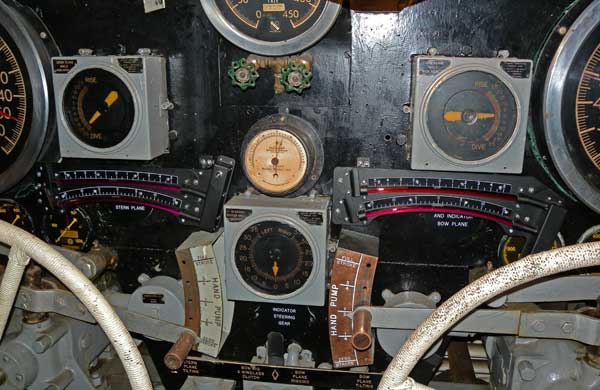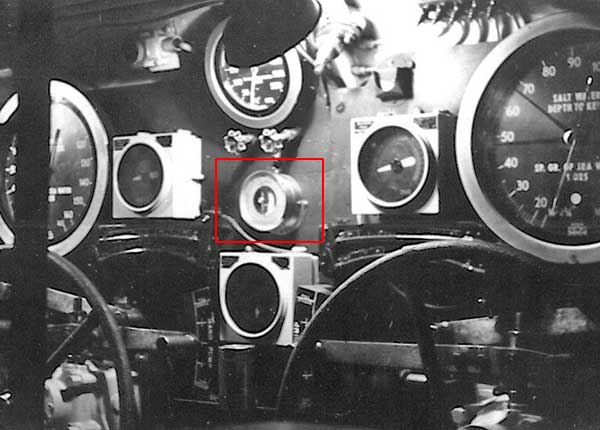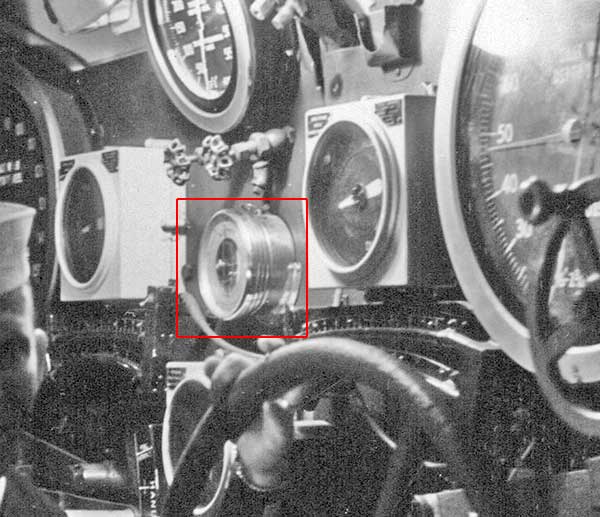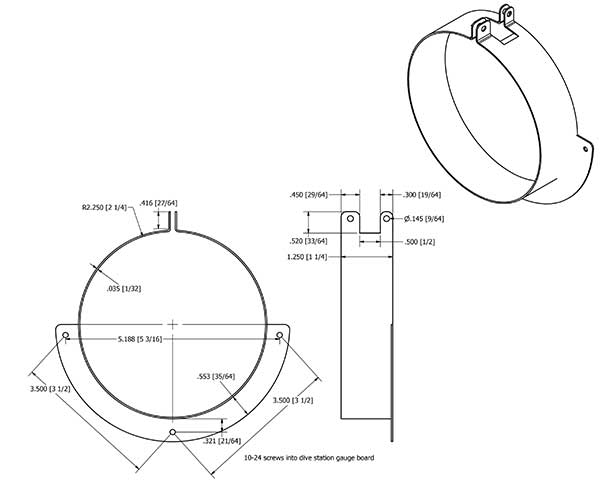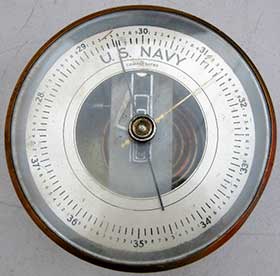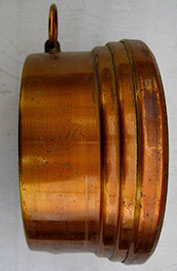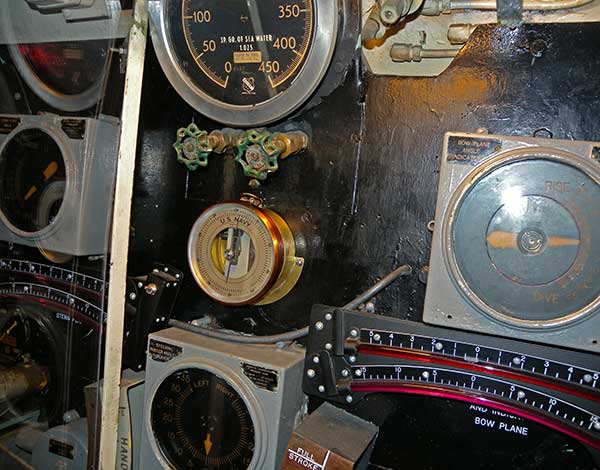USS Pampanito Barometer (Manometer) Replacement 2014USS Pampanito is a WW II submarine museum and memorial on Fisherman's Wharf in San Francisco. The boat is owned and operated by a non-profit and receives no government funds. Our preservation goal is to make the submarine as complete and accurate to our summer 1945 restoration date as possible. This note is a description of the project to replace the missing barometers, and a heartfelt thank you note to the individuals and corporations that helped make it possible. During WW II Pampanito had two barometers. One on the dive station in the control room and one in the conning tower. More accurately these are called manometers because they measure not only the pressure of the atmosphere when on the surface with the hatches open, but the pressure inside the closed submarine when dived. During a normal dive, after all the hull openings are closed, the electric hull opening indicators are all green, a final confirmation is performed by letting a little high pressure air into the boat. This causes a small rise in the pressure that is observed on the dive station manometer. If the needle is steady it shows that no air is leaking out of the boat and it was safe to continue the dive. All during a dive the manometer might be the first indication of a leak in one of the compressed air, freon, oxygen, nitrogen or acetylene tanks if the pressure increased unexpectedly. Of course a casualty causing a leak to sea would also change the internal pressure. Because these might cause a large increase in pressure, the manometers in the submarine are calibrated to read up to 38 or 39 inches of mercury as compared to a normal weather barometer that has a maximum of 31 or 32 inches of mercury. Another use is a normal barometer. On the surface with the bridge hatch open the conning tower instrument is used to help predict the weather. In general when the atmospheric pressure falls steadily a storm can be expected. When donated by the Navy to the museum there were no manometers on the boat. Early in the museum era, a Navy style barometer that came form one of the ships in the Susuin Bay Reserve Fleet was put on the dive station. The crew knew it was not the correct style barometer because the mounting holes did not match, but they also wanted an instrument in place to help interpret the internal pressure in the boat. During the research into the clinometer replacement project we found photos and drawings of the dive station from WW II confirming the location and mounting style of the original instruments. We also learned that there was a second instrument in the conning tower. We also learned the difference between a manometer and barometer and the higher pressure range needed to act as a manometer in a submarine. Once we knew what we were looking for we got incredibly lucky when the barometer expert we purchased a 1944 manometer with a different style case from found and acquired the correct manometer. We then created a replica of the mounting bracket based on the details of the empty bracket found in the conning tower and the photos from WW II. The three mounting holes have slightly different spacing and the conning tower has a small cutout on the right that is not in the dive station photos, but otherwise are the same. By computer modeling the simple parts were able to cut them on a waterjet, bend the round in a slip roller and braze it together in just a couple of hours. We have acquired a Navy style Friez barometer in the correct housing that has been mounted in the original bracket in the conning tower. We will continue to look for another manometer/barometer for the conning tower, we hope this will take less than the 30 years it took for the first one. We appreciate the advice, help, donations and discounted products and services from individuals and companies along the way. We had the help of an very talented team. We could not have succeeded without the incredible generosity of these people and companies: ADVICE AND HELP:
Volunteers and Staff of USS Pampanito, https://maritime.org/sub DONORS:
Merrill Kennedy, The Barometer Man, http://barometerman.com/ Rich Pekelney, Pampanito Volunteer was the project manager.
|

